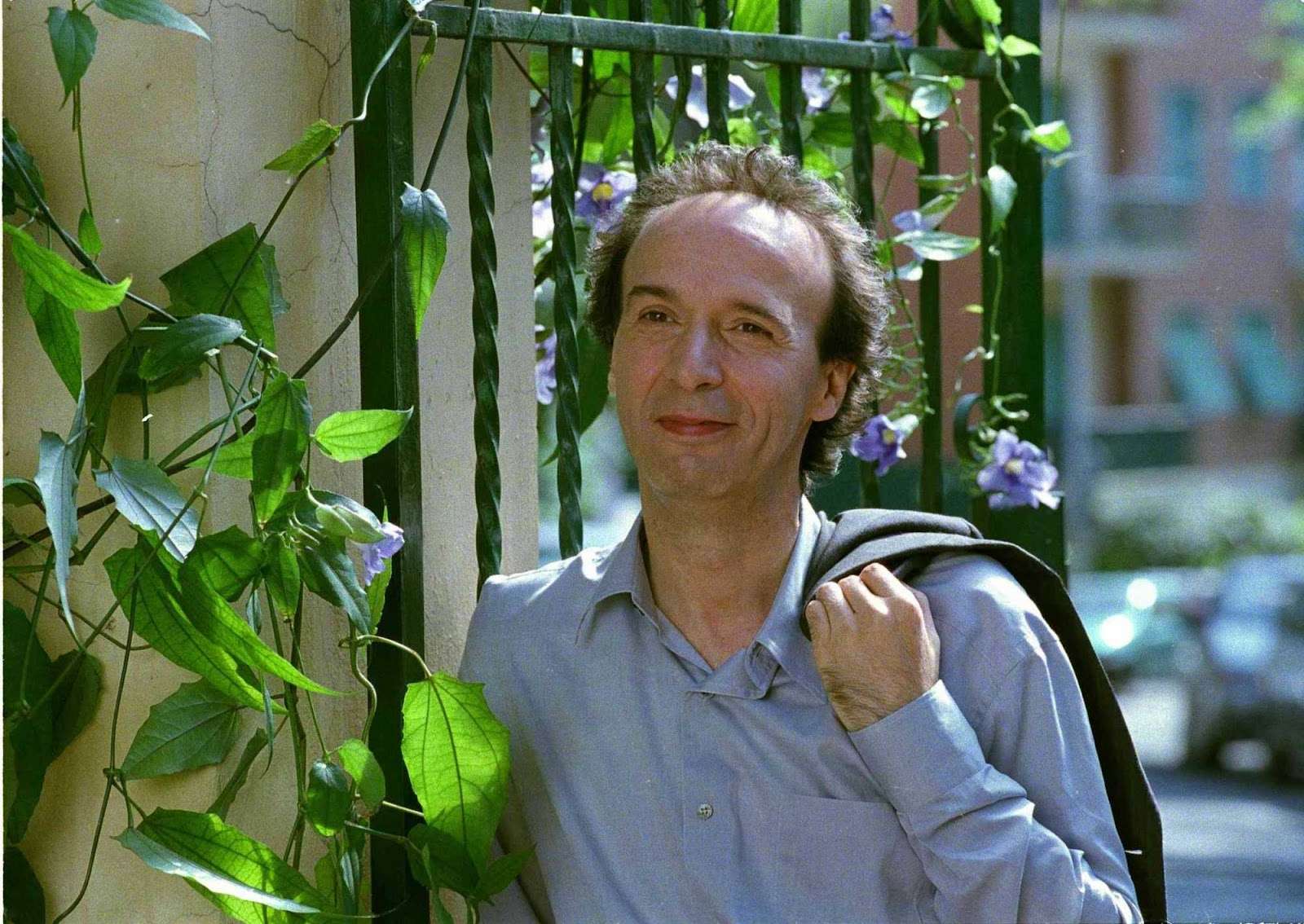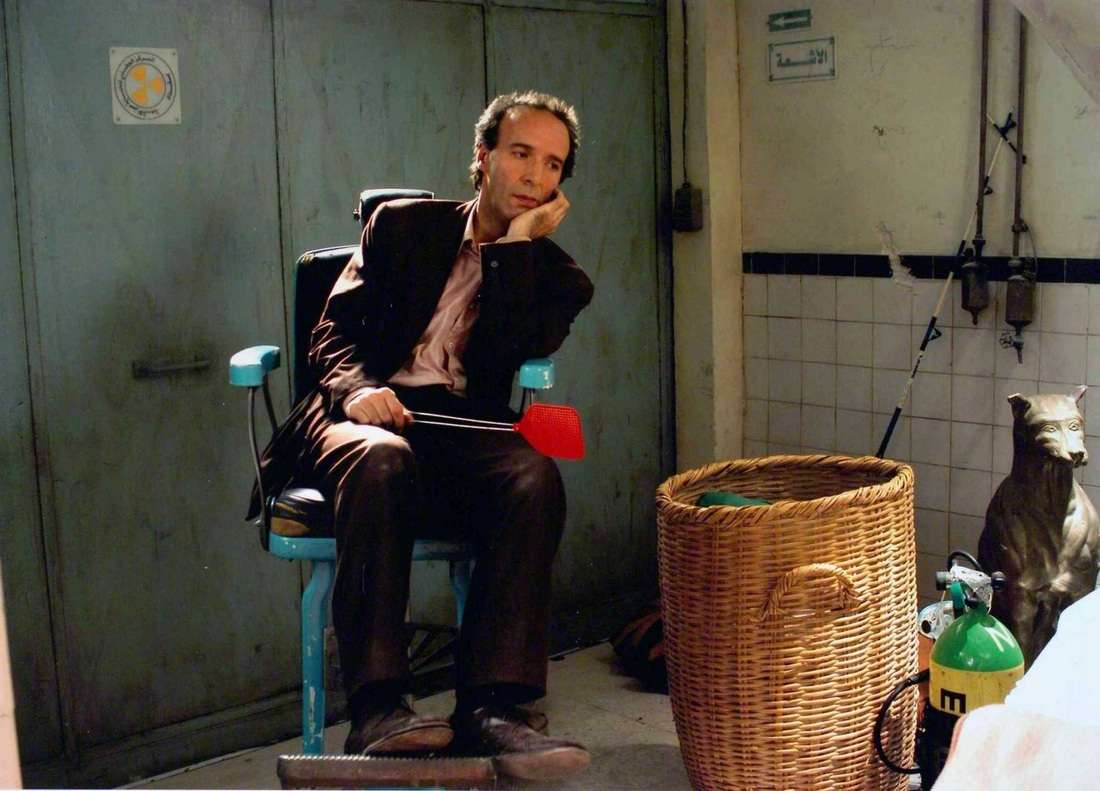Italian director, actor, and screenwriter Roberto Benigni returned to the scene after his timeless masterpiece “Life Is Beautiful” (1997) to present, in 2005, a work that is no less beautiful and splendid—even though it did not achieve the same level of fame and popularity. In fact, it is striking that the opinions about “The Tiger and the Snow” (2005) were so divided and varied.
In my view, there are many similarities between the two films. First, of course, is that Roberto Benigni wrote, directed, and starred in both films and in both, his real-life wife, Nicoletta Braschi, plays the female lead. The chemistry and complete harmony between the two are nothing short of astonishing. The second—and, in my opinion, most important—similarity is that in both films, Benigni searches for beauty amidst ugliness. He delves into history to uncover the darkest facets of human nature, weaving love stories and portraying tender familial bonds against the backdrop of chaos—whether in the trenches of World War I or the turmoil of the Iraq War.
He even challenges himself by trying to convey the suffering and brutality of war within a comedic framework, without fear of diluting the film with too much humor or being accused of trivializing the wounds of others. To one’s surprise as a viewer, you are able to experience every emotion he seeks to convey with ease. The comedy is very effective and varied, ranging from satire and irony to physical humor, while the drama, supported by superb acting and carefully written scenes, might move you to tears. You will discover that you have become like a malleable piece of clay in the hands of the genius Benigni, as he shapes your emotions as he pleases.
The film’s events are set in 2003 during the American invasion of Iraq. We follow the story of the poet Attilio (Benigni) and the tale of the writer Vittoria (Nicoletta Braschi), whose love story is anything but conventional. Attilio is a slightly mad, foolish yet brave and devoted Italian poet who loves the writer Vittoria so passionately that he dreams of their wedding every day. However, for reasons we do not understand until the end of the film, she completely ignores him and rejects all his proposals. She then travels to Iraq to write a column during the war.

Later, Attilio receives news that Vittoria has been injured by a shell and has fallen into a complete coma. Despite all obstacles, he decides to set out immediately for Iraq. Although all airlines bound for Iraq have been closed, he does not despair and, quite literally, performs miracles to reach her. There, he finds her in a total coma, suspended between life and death, reminiscent of the tale of Sleeping Beauty (from which the film originally drew its inspiration). He decides to remain by her side and searches for a cure amid a desert ablaze with the fires of war, where even the most basic necessities of life—and even less so, critical medications—are unavailable. Yet, as usual, no obstacle can stop a lover when he truly wants something.
In the background, we witness what happened to Iraq and how its people suffered during the invasion, but the core of the film remains a love story, albeit set in an unconventional locale. Some critics attacked the film after its release, describing it as overly melodramatic. However, I believe they could not fully grasp the film, which is nothing less than a poetic piece—sometimes epic, sometimes emotional. To understand the film, one must analyze its most important symbol: the title itself. What is meant by the tiger? And what does the snow signify? How can we interpret the penultimate scene, in which the title is literally embodied?
Firstly, it should be noted that there is no actual poem titled “The Tiger and the Snow” in reality; rather, it is a poem born from Roberto Benigni’s own thoughts that encapsulates the state of the film. The tiger symbolizes danger and destruction, while the white snow symbolizes purity—the antithesis, in the film, of the tiger. Moreover, the poem stipulates that a tiger should appear at the moment snow falls on Rome, an event nearly impossible since it seldom snows in Rome, and similarly in Iraq. Yet, there is also a scene featuring snowfall in Iraq.
Here, the symbolism is clear: love can emerge in any environment, even amidst tragedy, war, and death. One could hardly imagine an Italian university poetry professor, sitting comfortably and apathetically with no interest in politics, suddenly embarking on a mad journey to a desert aflame in the distant East—far from his homeland and everyone he knows—taking planes, cars, motorcycles, and even camels, all to reach his beloved. Had someone witnessing this act misunderstood it, they might surely think he saw a tiger in Rome at the moment the snow fell.

One of the most astonishing aspects of Benigni’s direction in “The Tiger and the Snow” is his complete control over the narrative’s flow. The love story never leaves our sight for a moment—our protagonist focuses solely on rescuing his beloved at any cost. What has happened to her is portrayed as the greatest calamity in the universe, even though, quite literally, he finds himself in the middle of the largest international conflict zone in the world. It is beautiful that the war never distracts us even for a moment from the hero’s singular focus on his love; he neither cares about nor contemplates the war, even though it is ever-present in the background of nearly every scene.
We also meet a variety of Iraqi characters during the wartime setting. For instance, there is a character who tries to steal Vittoria’s necklace while she is comatose—not out of inherent malice, but because the circumstances of war forced him into such behavior. Additionally, there is the character of the poet Fuad, portrayed by French actor Jean Reno, who is one of the film’s most intriguing characters. Fuad is not merely a passing figure; he embodies three symbols simultaneously. First, he is the bridge connecting the East and the West—a progressive Iraqi who is a poet, translator, and multilingual speaker, defying the stereotypical image of Easterners in Western films, and he shares a genuine friendship with Attilio, assisting him without any personal ulterior motives.
This proves that true friendships can indeed exist between East and West. Second, Fuad serves as the dramatic counterpoint to Iraq’s condition when Attilio remarks that he is descended from the people of Babylon; witnessing Iraq’s current state helps us understand what has befallen the East in general. Third, if Attilio is the heart, then Fuad is the mind—a mind that, while trying to rein in his passionately mad friend and rationally searching through the maze of Iraq for a remedy, reveals that he had been harboring deep pain and emotions all along. The grief from the destruction of his homeland and the death of his family ultimately became too much to bear, leading him to kill himself—a reminder that even the strongest individuals can break under pressure.
There is no doubt that “Life Is Beautiful” is a superior and more perfect film than “The Tiger and the Snow,” but this does not mean that the latter is a bad or mediocre film by any means. It is a wonderful masterpiece crafted by the anguished clown Roberto Benigni, whose works will live forever. I am certain that anyone who watches the film will end up smiling at its gentle conclusion.



![Good Manners [2018]: ‘BUFF’ Capsule Review](https://79468c92.delivery.rocketcdn.me/wp-content/uploads/2018/03/goodmanners3-768x384.png)
![Twenty-Four Eyes [1954] Review – The Collective Suffering and Healing of a War-Scarred Nation](https://79468c92.delivery.rocketcdn.me/wp-content/uploads/2020/07/Twenty-Four-Eyes-1954-768x579.jpg)

![Undine [2020] Review: A garden-variety romance with mermaid-myth garnish](https://79468c92.delivery.rocketcdn.me/wp-content/uploads/2021/05/Undine-1-highonfilms-768x432.jpg)
![The Tale Review [2018] – An Intensely Disturbing Story of Child Sexual Violation](https://79468c92.delivery.rocketcdn.me/wp-content/uploads/2018/05/the-tale-cover-768x525.jpg)
![American Psycho [2000] : Ugly Crab Inside a Shiny Shell](https://79468c92.delivery.rocketcdn.me/wp-content/uploads/2016/12/american_psycho-768x432.jpg)